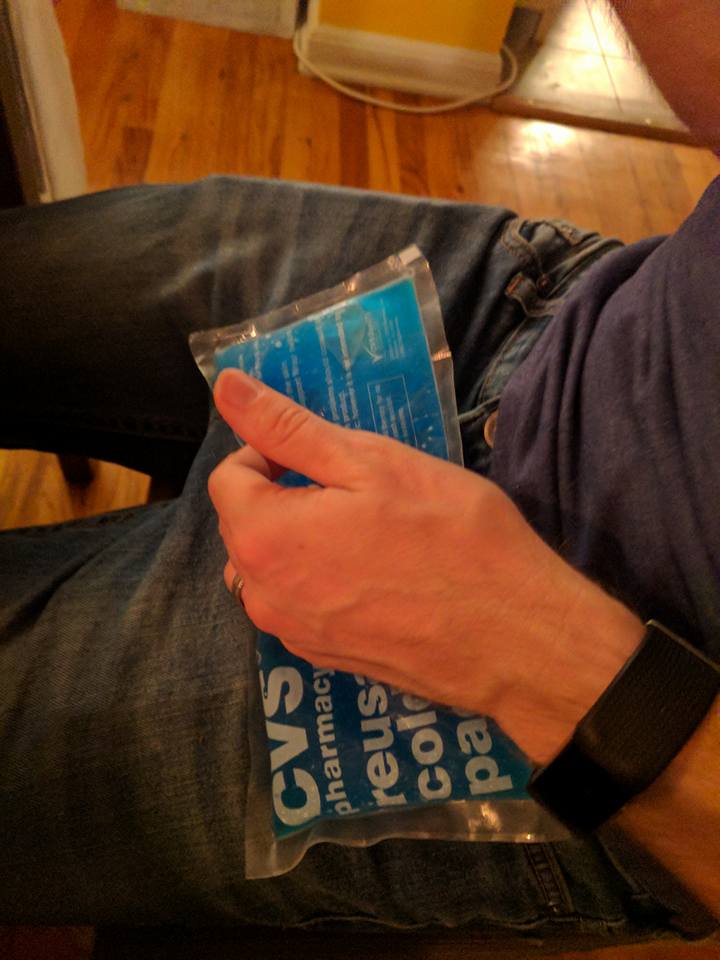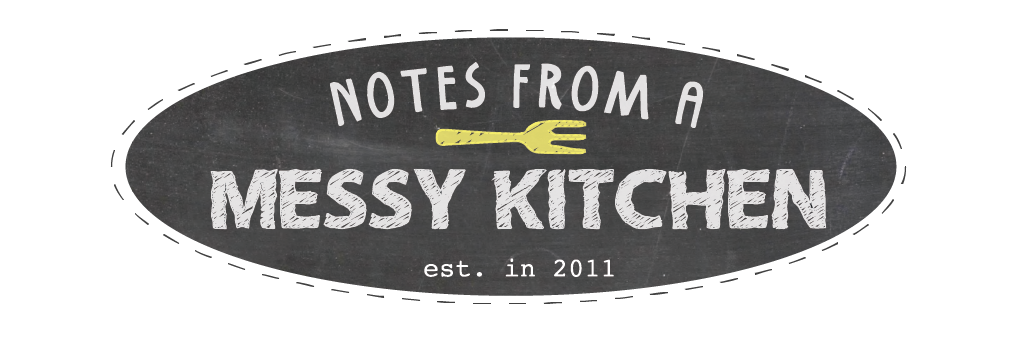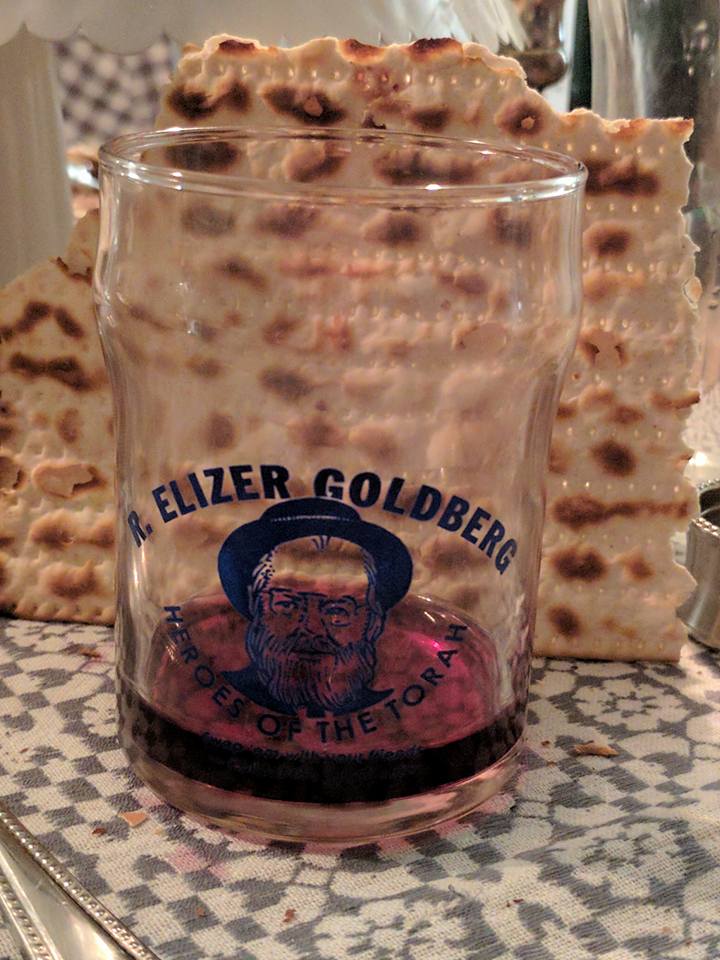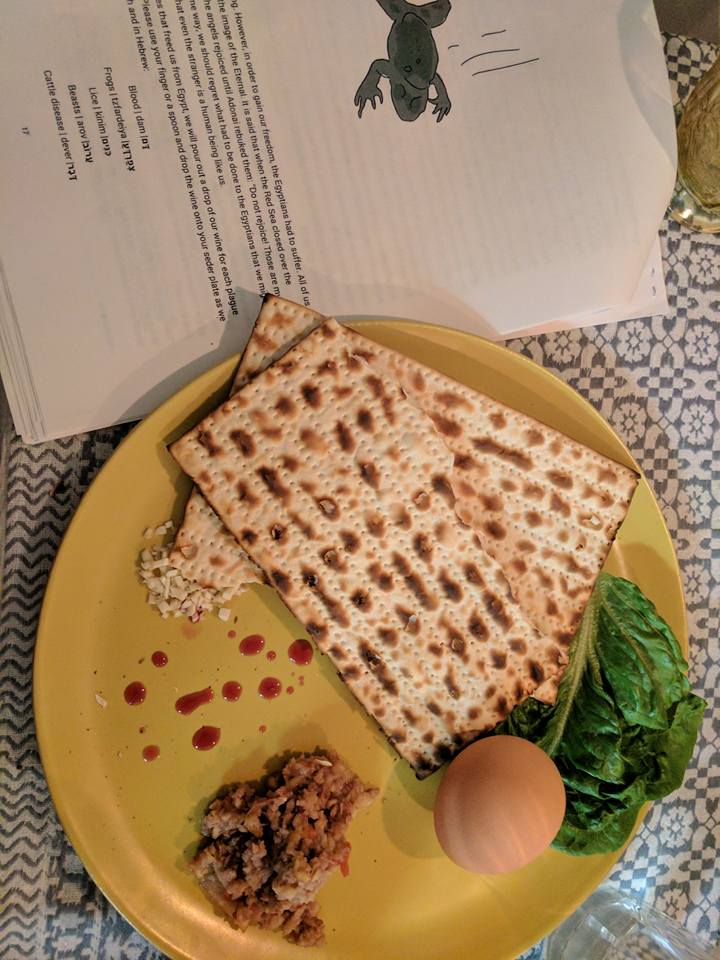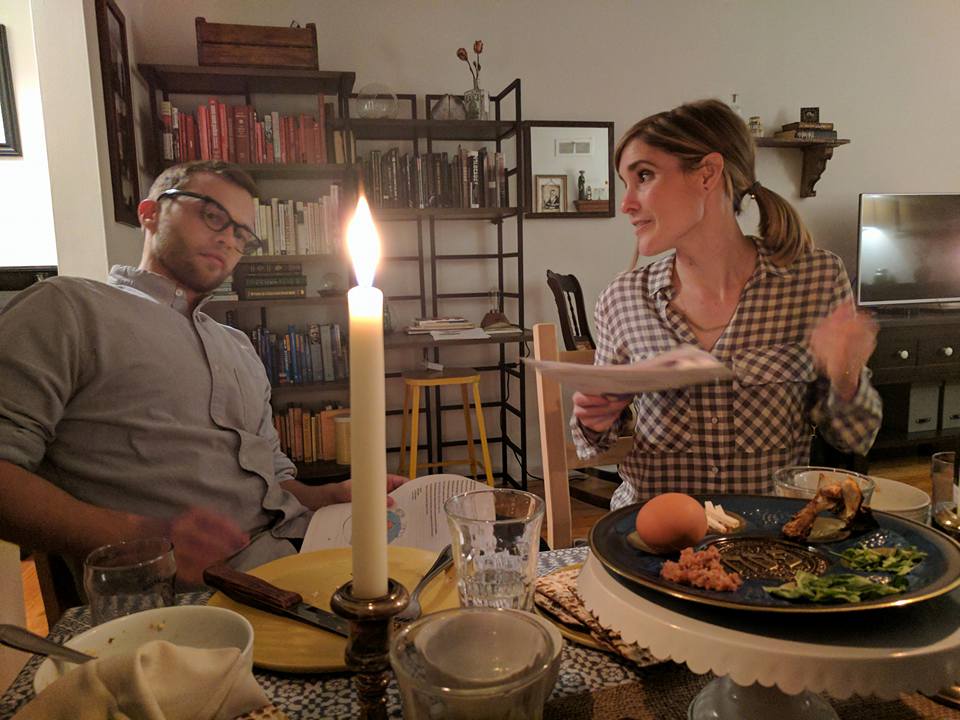Chag Pesach Sameach! Our first Passover Seder
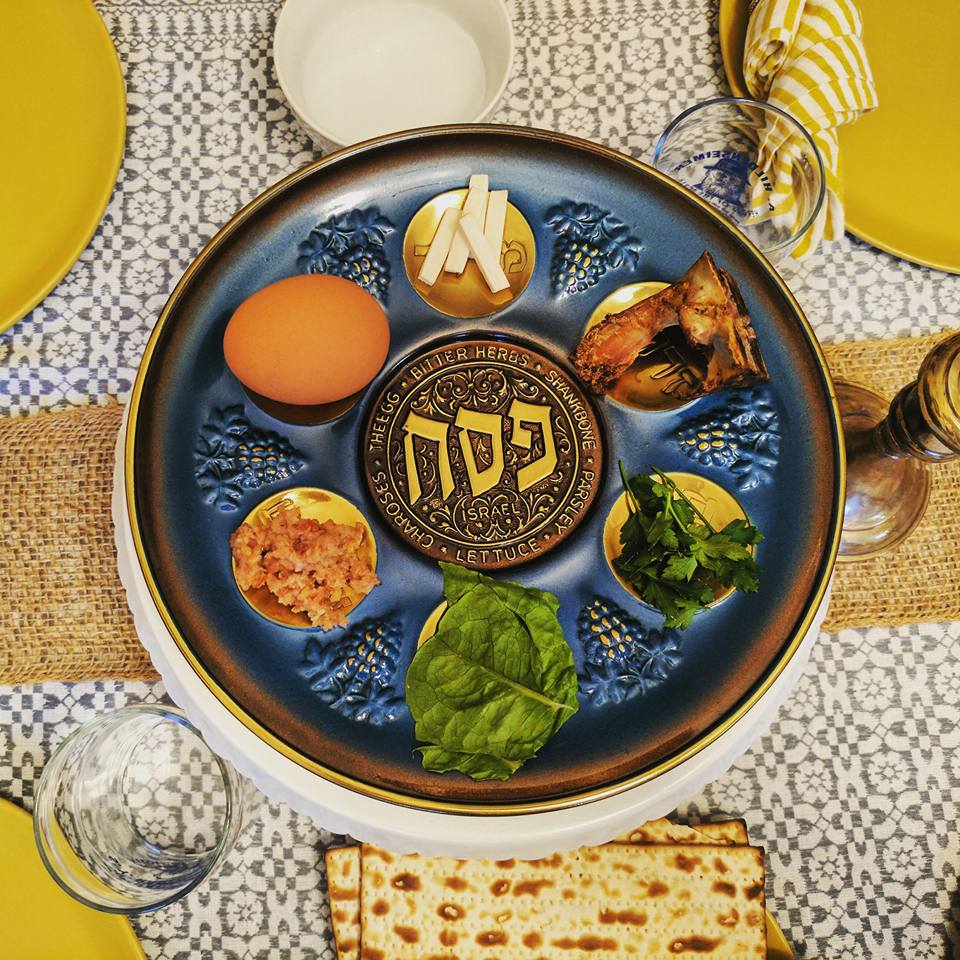
On Monday evening I got to participate in my first Passover Seder. I was even entrusted with making the matzo ball soup! I’ve always loved traditions and have been particularly interested as of late in learning about the traditions of other cultures, particularly as they relate to food. So as you can imagine, I was thrilled when Holly invited me to join her Seder. She even made me my very own Haggadah!
If your Seder dinner were a play, the Haggadah is your program – complete with the stories, prayers, songs, and games that will make up your night – all in a very specific sequence. Seder – which literally means “organized” – is pretty much the epitome of the word tradition. The dinner is to start at sun down and proceed in a very specific fashion, retelling the story of the liberation of the Jewish people from slavery in ancient Egypt. While all haggadot follow certain themes, you can now find many variations from the orthodox to the liberal, mystical, feminist, ecological, and children’s. Ours placed a special emphasis on remember that Jews were refugees, and recognizing the modern day plight of refugees and that for many peoples the fight for freedom from oppression is ongoing.
“We commit ourselves to join the fight against injustice wherever it exists in whatever ways we can. For as long as one person is oppressed, none of us are free.”
The first thing I learned was that the dinner involves a minimum four glasses of wine, not my typical Monday night. Oh, and each is to be drank in no more than four minutes. Turns out there are a lot of fours (four questions, four sons, four matriarchs, etc).
After the Kadeish – the blessing of the first glass of wine – comes the Urchatz: the first washing of the hands.
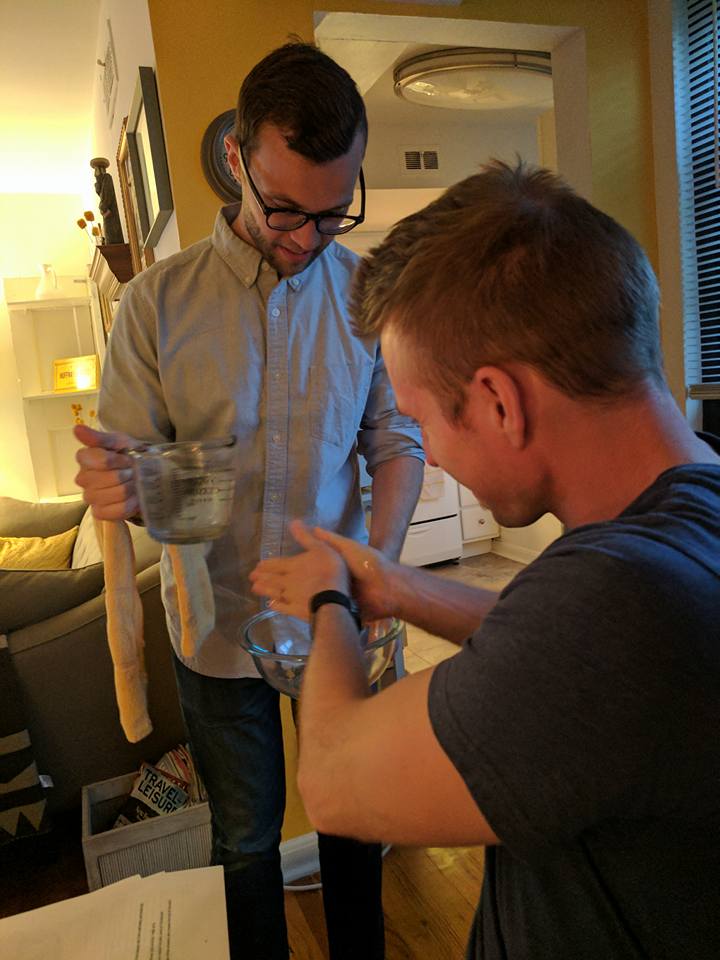
There are many symbols of slavery and freedom throughout the supper, but perhaps the most symbolic is the Seder plate.
The karpas, parsley or another herb, represents the green of spring; it is dipped in salt water, representing the tears of enslaved ancestors. Maror (horseradish) and Chazeret (romaine) are bitter herbs, representing the bitterness and harshness of slavery. The lamb bone represents the sacrifice in the temple of Jerusalem, and the hardboiled egg represents mourning. Charoset, a sweet mixture of apples, nuts, spices and wine, symbolizes the mortar the slaves used to build for the Egyptians.
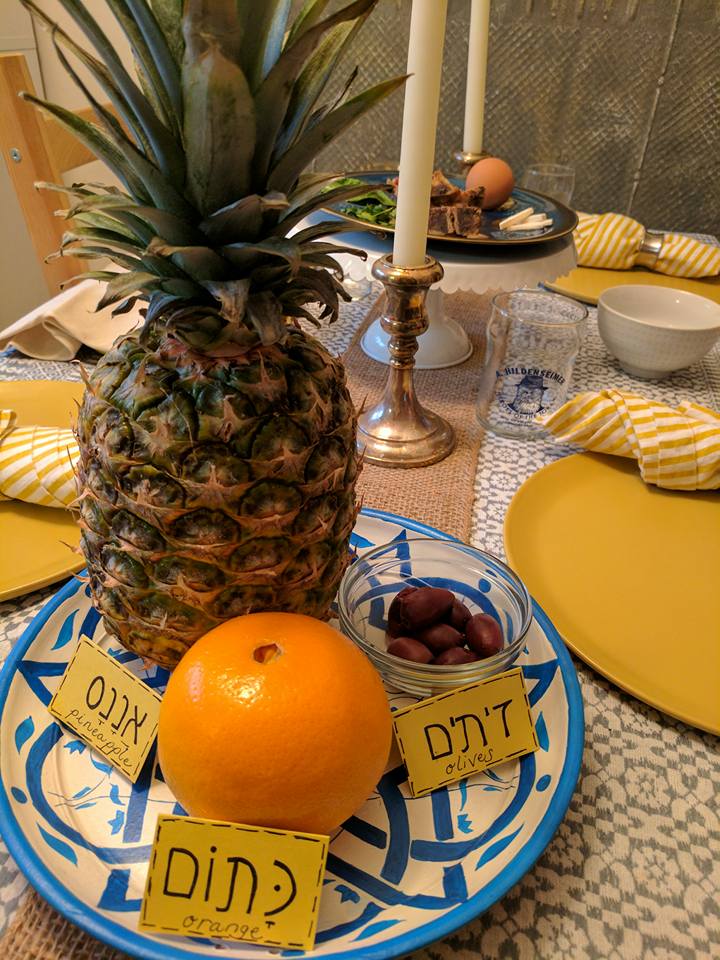
The sounds of the breaking of the matzah sends us into a fractured existence, only to become whole again once the broken half – the afikoman – is found and eaten. One piece is hidden for the children to find after the meal. In our case, the eldest (Courtney) hid it for the youngest (Jason) to find behind the blinds. Each person makes a sandwich with their matzah, the bitter herbs and the charoset.
Next is the reciting of the ten plagues, and with each plague a finger is dipped in the wine and a drop is put on the Seder plate. There was an excerpt from this section of the Haggadah that I especially liked:
“Just as we often do, the Egyptians found ways to rationalize away the implications of these ten plagues, until the final one that could not be rationalized away. They were also human, and they resisted, rather than change what they were doing. How are we like the Egyptians in this respect? How would we change, but are not changing because it would be painful, or uncomfortable, or inconvenient?”
Finally, just as we’re all getting hungry and drunk, the meal can be served.
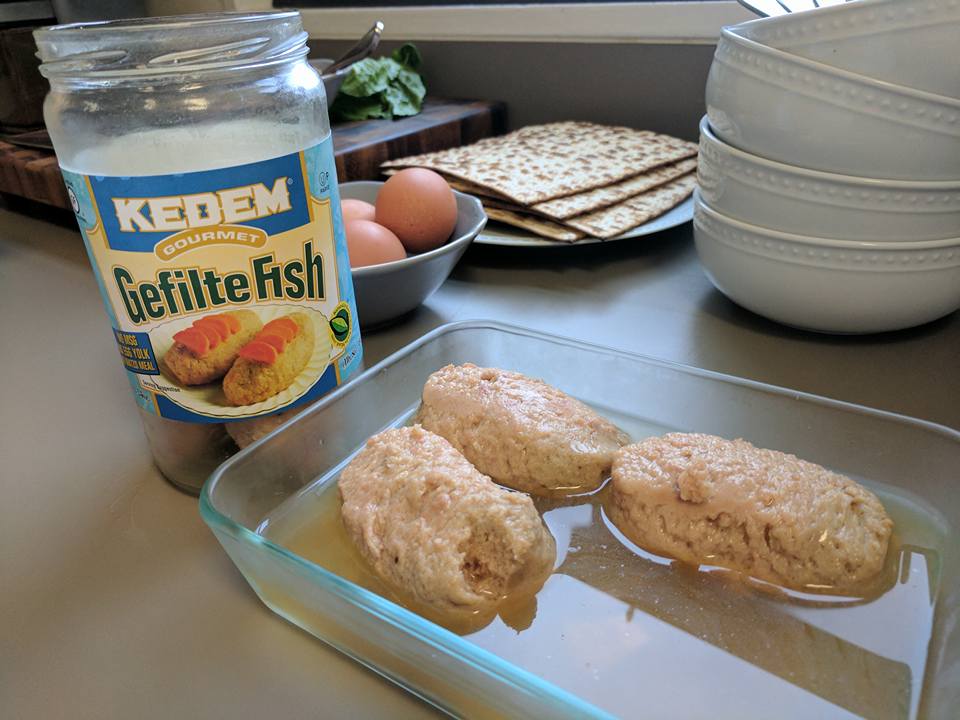
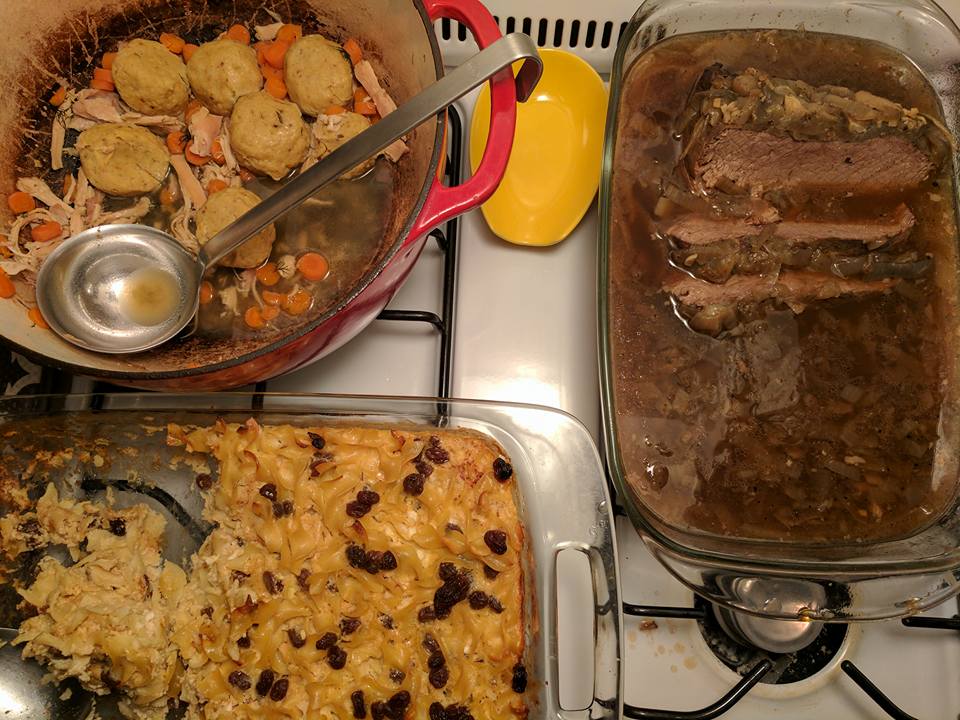
By the end of the meal, we were all reclining to the left, as one is supposed to do during a Seder dinner.
But before it’s time to go, there are some things to wrap up. We must pour a glass of wine for Elijah, who is let in by the children; I’m pretty sure this came about the same way as leaving cookies and milk for Santa (no, honey, Elijah likes red wine!). We must also find the hidden matzah, which hopefully is hidden somewhere clean since we still must eat it to mend our fractured existence.
Also, we must finish our last two ritual glasses of wine!
